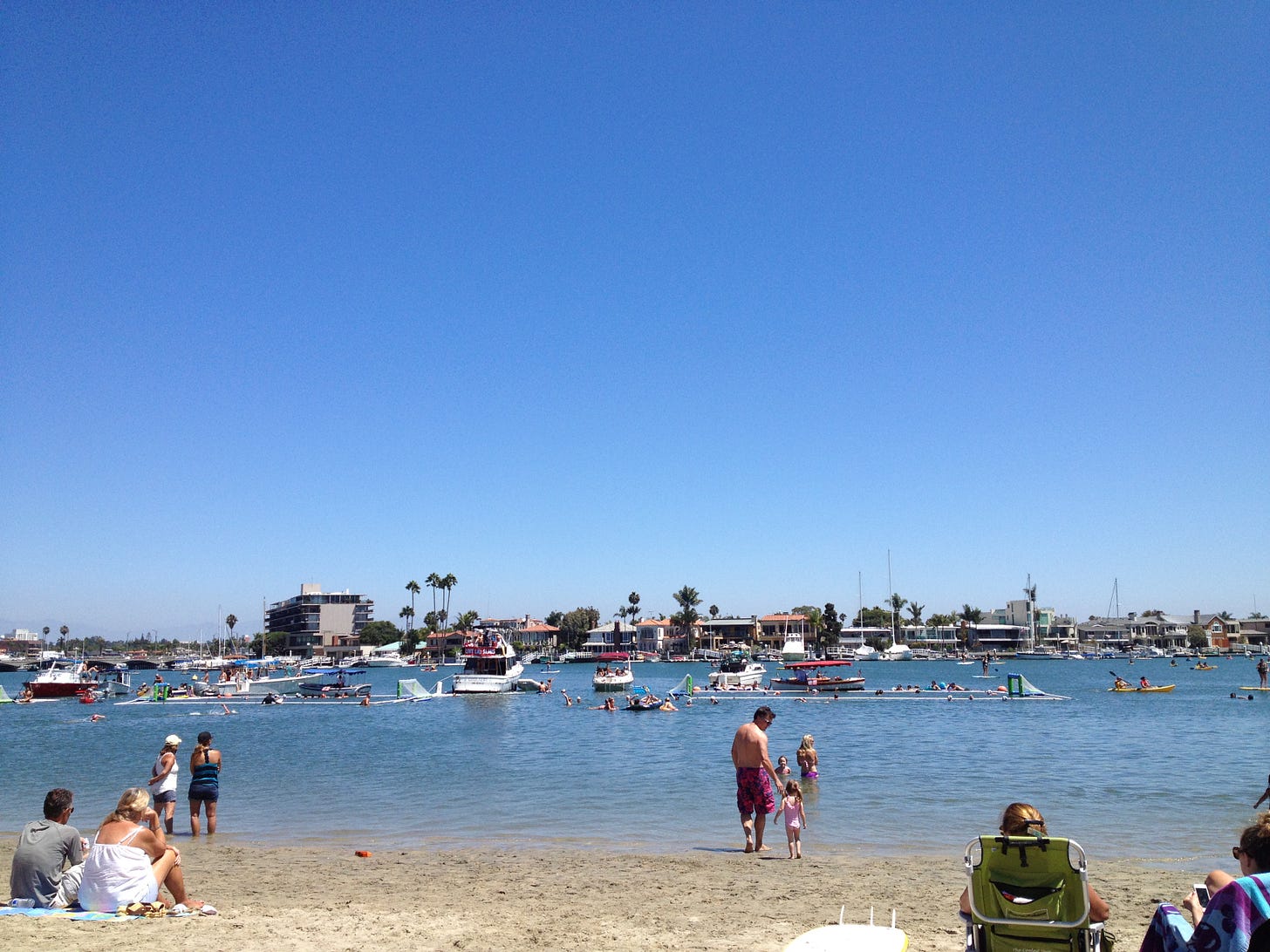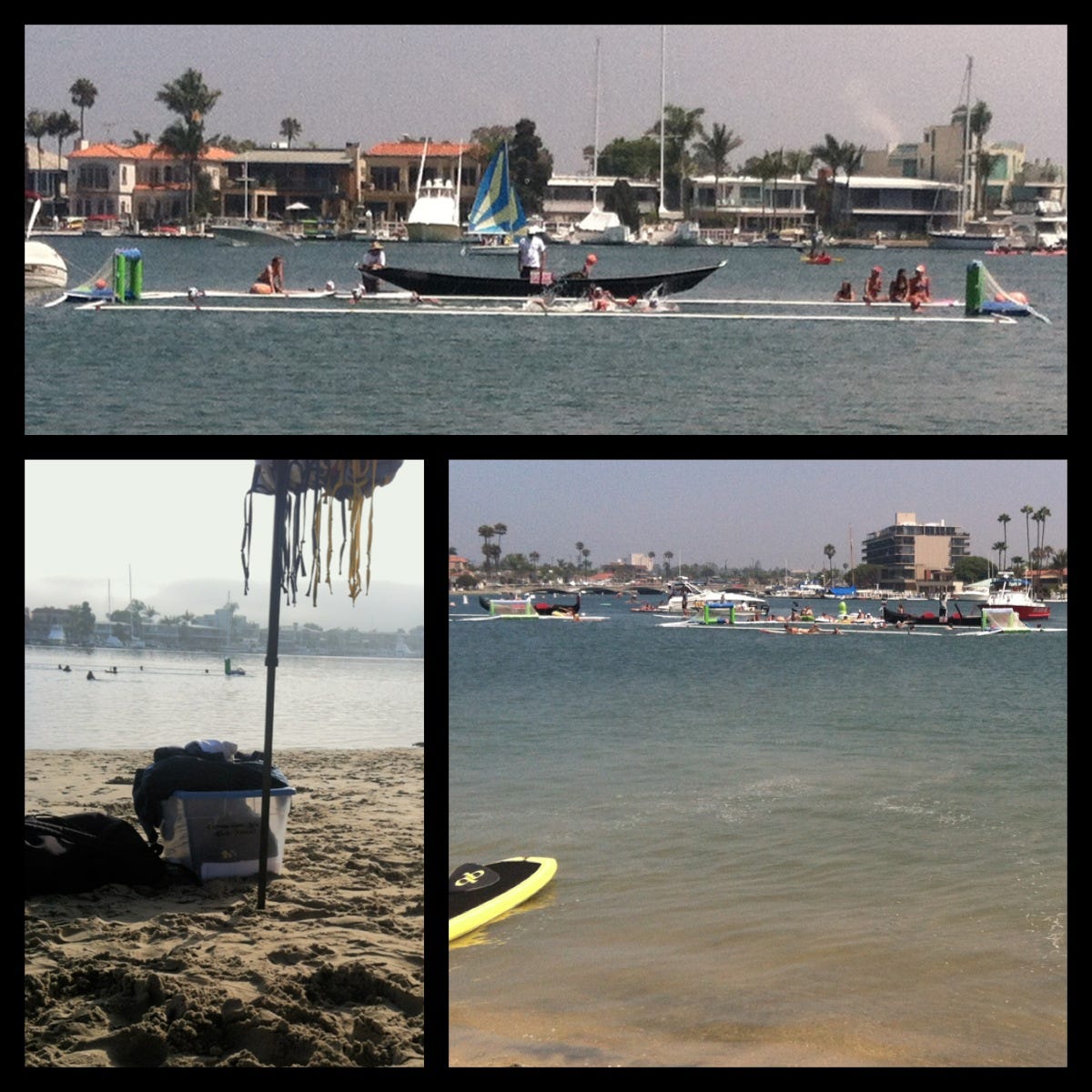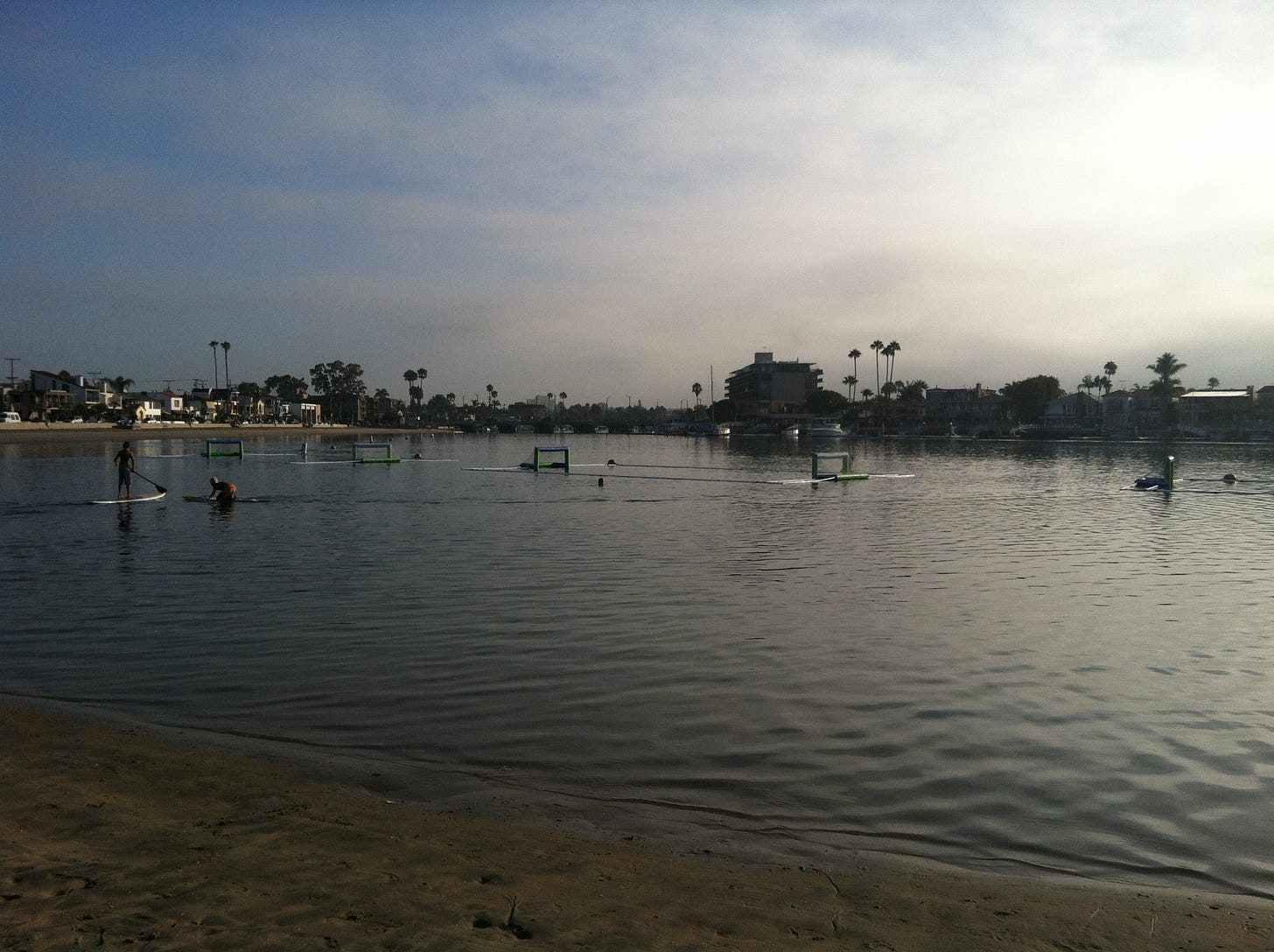Taking it to the Beach
How the neglected offshoot of water polo provides an avenue for the future
Every year, nestled between the end of JOs and the start of the high school boys season, there's a tournament held in Los Alamitos Bay. Since the early 2000s, the Beach Water Polo Cup has been bringing the fun and excitement of beach water polo to athletes and coaches in the United States. Attending the event, the carnival atmosphere and sense of fun is palatable and contagious. Based on conversations I've had with participants, I am not alone in thinking that the annual Beach Water Polo Cup is the best water polo event in the country. As this year’s edition is set for this weekend, it seems an ideal time to examine a niche area of water polo that may hold the key to the future of the sport.
While the sport of water polo existed first as an open water affair in bays, lakes, and rivers in England in the 1800s, what we are familiar with as beach water polo today can trace its roots to Italy where the first international tournament was contested in 2001. Since then, beach water polo has spread to many places (it's huge in Russia) and gone through many rules permutations; however the basics of the game remain fairly consistent. The major deviations from the more formal game of water polo are in the number of players, size of the course, duration of games, and a lack of (or at least great reduction in) stoppages in play. It is these slight changes to the game that offer the first insight into the manner in which beach water polo can represent a future for the sport. Many sports such as basketball, volleyball and soccer have embraced versions of their sport that allow for fewer players and smaller courses. This reduction in players and space offers multiple benefits for sports because it reduces the bodies needed to field a team as well as making each player on the team more involved in the play; as coaches, we do this already in practices any time we have athletes participate in a small-sided game for development.
Smaller sides and the use of open water over a pool or natatorium also makes it easier for athletes to find the numbers to play and to play the game in a pick up or recreational manner. This increases the time and exposure to the sport for current athletes, but also offers opportunities for introducing the sport to new people that you do not get in a pool. Across the country, there is constant talk of the difficulty in finding enough pools and pool space for polo programs and this is exacerbated in places where swim programs are ingrained and water polo is struggling to find a foothold. Swim coaches have no interest in ceding pool time to water polo; the sport is at best an annoyance and at worst an existential threat to most swim programs. This lack of pool availability and conflict with more established aquatics programs can be avoided by moving water polo into open water. Furthermore, even places that are underserved with aquatic infrastructure likely have access to open water. The cost of an inflatable course for open water (a one time purchase of a few thousand dollars) is also vastly more attainable than renting pool space or building new aquatic facilities. If you want to grow the sport, grow it in the place where there is room. While “polo in every pool” is a great goal, it may be easier and more effective to try and translate that into polo in every bay, lake, quarry, swimming hole, or regional park that has open water. In fact, this is more ambitious than polo in every pool, it's envisioning polo anywhere.
When discussing beach water polo as a future for the sport, it is important to emphasize that the “beach” aspect is a major selling point. Played in open water, water polo can be played in venues that are ideal, picturesque and stunning—places people want to go. The sport of water polo played in pools just isn't appealing to those who don't already know water polo; furthermore, it doesn't do enough to showcase the physical and social strengths of our athletes. In this instance I may be speaking more for California than other states or countries, but water polo players have more in common culturally with surfing and other beachcomber activities than anything else (especially swimming). It is alarming that water polo hasn't paid more heed to the example of beach volleyball and the life that it breathed into the sport at large with proper exposure and marketing. The image of a tall, well-muscled, tanned polo player with sun bleached hair and a SoCal accent playing in the waves and lounging on the shore is and should be something that can be used to expand the profile of water polo in the same manner. Taken to the beach, water polo can mine this association to increase its profile and influence the impression of the sport to those less familiar with it. This could include using existing beach events such as the US Open of Surfing or an AVP tour stop or similar waterfront festivals to set up exhibition showcases to draw new eyes to the sport that already have a natural predilection for the types of locales where the sport is being played. Frankly, if we want new people to stumble upon water polo and see the game as something fun and exciting, then the game has to get out of natatoriums and to where people are.
It was mentioned earlier that the rules of the game are modified in order to suit the beach format, and this serves as another aspect that can recommend the game of beach water polo over the more traditional game. Already, the lack of stoppages in play and various game ending conditions (time limit, race to a score, sets and matches) illustrate the willingness of beach water polo to alter the rules of the game to suit the needs of the contest and keep the interest of participants and spectators. While World Aquatics does frequently experiment with the rules at the international level, the politics and stakes for the organizations involved are such that these rule change experiments merely maintain the game for those already participating rather than expanding it to others or finding ways that the rules can make the game more spectator friendly and—more importantly—understandable.
The relative lack of interest of World Aquatics to beach water polo provides an opportunity to grow the game outside of its purview and be much more experimental with what draws spectators or makes the game an enjoyable event to watch. This is not meant as a slight at World Aquatics and their stewardship of the sport but more as an observation that there is room for more water polo and more versions of water polo than currently exist. The hope would be that several versions of beach water polo or possibly several types of beach water polo leagues could exist. This is not a threat to the sport in pools but rather an opportunity to grow and expand the game and possibly evolve others like it. Water polo is alone in the aquatic disciplines as a team and ball sport, but perhaps through experimentation and evolution water polo could become the first in a family of similar but distinct ball games to be played in an aquatic medium.
Where all these disparate virtues of beach water polo come together is in presenting the game to new athletes and spectators in a more intriguing manner. Already on Instagram some of the most liked, shared and commented on posts are those that show water polo being played in open water courses. These locales are more eye-catching on social media and present the sport as fun, exciting and something for everyone. Drawing another parallel to beach volleyball, the visibility of the events on the beach as opposed to inside a gym (or in the case of water polo, the pool or natatorium) allowed for the type of exposure that generates sponsorship opportunities and media deals. Similarly, the shorter nature of the games and fewer stoppages also make the game easier to package for things like television (in need of more live and unscripted content now more than ever) or YouTube.
It is on YouTube that beach water polo may have a real chance to draw a new audience. Instead of live streaming, an event could record on multiple cameras including a drone and then edit and produce the game to make the most appealing product possible. This could include athlete interviews, replays, and commentary that create a more exciting product for spectators. This approach could also be used to pull in personalities or athletes from other sports (like those surfers mentioned earlier or influencers with a water polo connection) to participate and bring their audience to water polo. Presenting the sport in this manner would also allow for the exploration of other avenues of content generation to bring attention to water polo. There is precedent for niche sports to pursue this type of content in order to grow an audience of spectators who may have no familiarity with the sport otherwise (World Chase Tag, disc golf and whiffle/blitz ball to name a few).
Beach water polo does not have to be just a niche of a niche sport, but it will continue to be as long as there is no will on the part of the water polo commmunity to make it something different, something better. With the continual consternation over the health, growth and longevity of the sport of water polo, the community is missing a vital opportunity to address these concerns by not exploring all areas of the sport and pushing water polo to be something more than what it currently is. This isn’t, likely can’t be and probably will never be a priority of World Aquatics. It is up to those outside the ingrained structures of the sport to take up the cause and make this change happen and move water polo forward into a better future. So until next time and especially if your weekend plans include the beach, lake or river, keep thinking water polo.







It could be what beach volleyball is to volleyball.
But equipment is a challenge